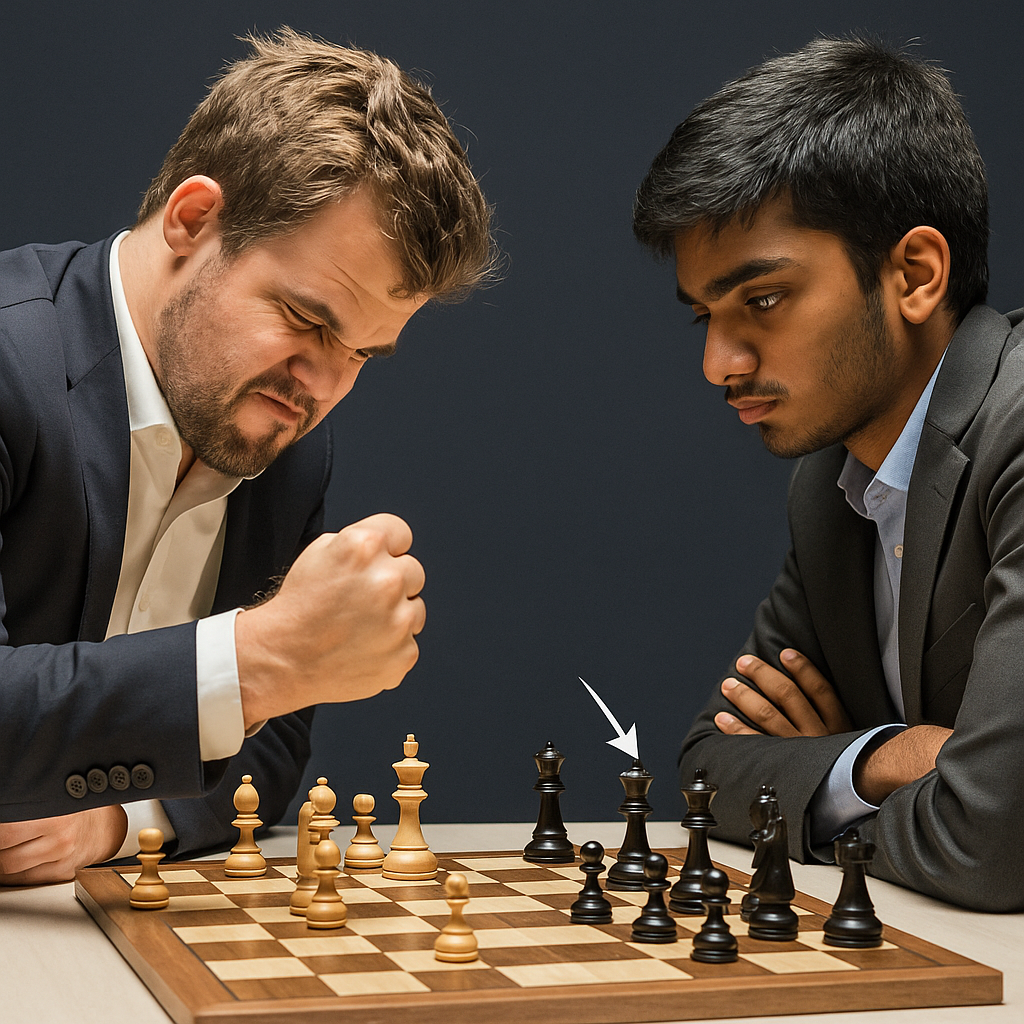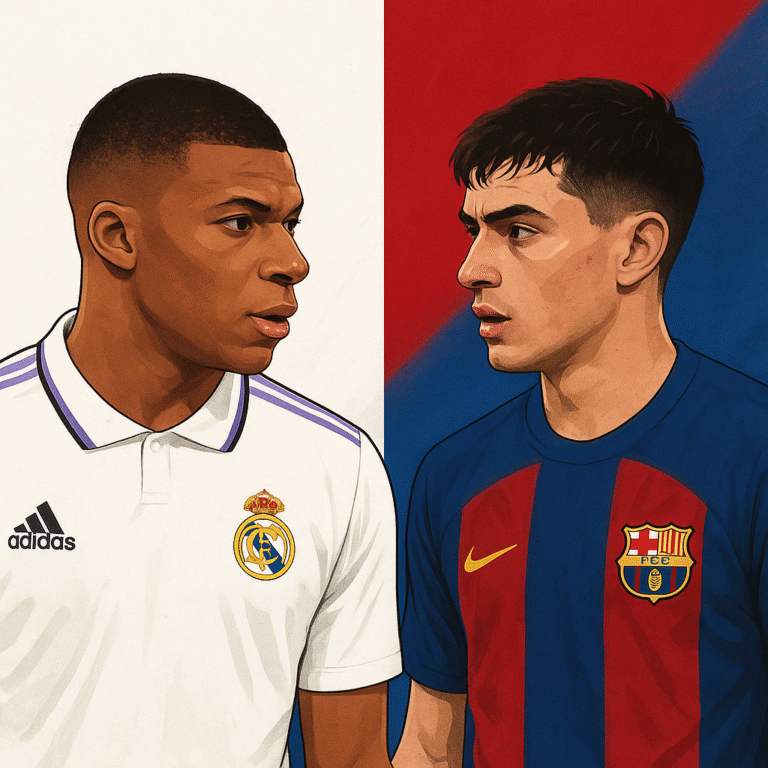
The cool, quiet landscape of Stavanger, Norway, became the center of the chess world as two of the most talked-about grandmasters—one a legend, the other a prodigy—collided in an unforgettable showdown. With the air thick with tension and anticipation, the Norway Chess 2025 tournament transformed into a modern-day battleground where Magnus Carlsen, the enduring king of the game, faced off against Dommaraju Gukesh, the 18-year-old World Champion who had already stunned the world with his maturity and strength on the board.
The Opening Drama
The format of the tournament was unique: six elite players—Carlsen, Gukesh, Caruana, Nakamura, Erigaisi, and Wei Yi—competed in a double round-robin structure with classical games offering 3 points for a win and additional Armageddon tiebreaks for drawn matches. The structure emphasized aggressive play and punished passive strategies. Right from the first round, the fireworks began.
Carlsen and Gukesh were pitted against each other in Round 1. It was the kind of battle that chess aficionados dream of. For nearly five hours, the two gladiators traded blows in the form of precise calculation and deep endgame understanding. Eventually, Carlsen’s mastery and experience prevailed, forcing a resignation from Gukesh in a draining endgame. It was a powerful early statement from the former World Champion, as if to say that age and experience still mattered in this game.
The Turning Point
Everything changed in Round 6.
This time, the narrative flipped. Carlsen again built up a strong position. His strategy was clinical, and for a time, it seemed the game was under control. But in a surprising twist, under time pressure, he made an uncharacteristic blunder. Gukesh seized the opportunity with breathtaking accuracy, unleashing a knight fork that ended Carlsen’s hopes.
What happened next became a global talking point. Carlsen, visibly frustrated, slammed the table with his fist, sending pieces scattering. The image of him with clenched jaw and scattered chessmen quickly circulated on social media. For a player so composed, it was a rare and raw show of emotion.
While Carlsen’s reaction was met with mixed views—some critical, others sympathetic—it underscored how high the stakes were. The game was more than just about points; it was about pride, legacy, and a shift in power.
The Backlash and Composure
While Gukesh’s win was widely celebrated in chess circles, an unfortunate wave of online negativity surfaced. Trolls directed racist and inappropriate comments toward the Indian prodigy, attempting to dampen what was an incredible achievement. But Gukesh showed immense maturity. Brushing off the hate, he continued to focus on the board and the tournament ahead.
When asked about Carlsen’s outburst, Gukesh was diplomatic. “I’ve also banged a lot of tables in my career,” he joked, diffusing the tension with humility and grace. The moment was a testament to the young champion’s temperament—under pressure, and now under global scrutiny, he remained composed and focused.
Psychological Pressure and Statements
After his loss to Gukesh, Carlsen made headlines again—this time off the board. He questioned the very relevance of classical chess in modern times. “What’s the point of standard chess?” he asked, highlighting the prevalence of deep engine preparation that often turns opening phases into memory contests rather than battles of creativity.
This wasn’t just an emotional reaction. It reflected Carlsen’s evolving perspective. As one of the main advocates for rapid and freestyle formats, including Chess960 and online blitz, he expressed increasing fatigue with the rigid, often predictable nature of classical games. His words sparked debate across the chess world.
Some argued it was a sore loser’s lament. Others saw it as an important conversation about the future of the sport. With Carlsen’s influence and following, his disinterest in classical play carries weight and could shape future tournament formats.
Midway Through: The Heat Intensifies
The tournament tightened. Carlsen bounced back from his loss with classical wins, showcasing once again why he remains such a formidable force. Gukesh, on the other hand, remained solid and consistent, mixing cautious opening prep with imaginative middlegame attacks.
Caruana and Nakamura also began gathering steam. With points available in Armageddon tiebreaks for drawn classical games, the standings fluctuated rapidly. By Round 8, three players were locked in a close race: Carlsen, Gukesh, and Caruana.
Tension within the hall grew visible. Players spent hours behind the board, absorbing complex positions while the audience held their breath. Mistakes, when they came, were often due to time pressure, fatigue, or the enormous psychological weight of the tournament.
The Final Countdown
As the last round approached, Carlsen was slightly ahead in the standings. For him to seal a record seventh Norway Chess title, he needed one more classical win. Gukesh was not far behind, and Caruana was also within striking distance.
Carlsen, drawing on his vast experience, delivered under pressure. In the decisive game, he dismantled his opponent’s defenses with quiet precision, squeezing out weaknesses over time until the advantage became overwhelming. The win secured his position at the top of the leaderboard.
Caruana finished a close second, and Gukesh, despite a valiant and historic effort, had to settle for third. It was a respectable finish, and more importantly, a confirmation that he belonged at the top tier of world chess.
What It Means for Chess
This tournament was more than just a collection of games. It became a microcosm of the shifting world of chess—a world where generations clash, ideologies diverge, and the pressure to adapt is relentless.
1. Classical Chess Under the Lens
Carlsen’s comments reignited an important dialogue: Is classical chess too slow for today’s audience? Are players overly reliant on computer preparation? Organizers and players alike may increasingly push toward mixed formats—like Armageddon, Rapid, or Freestyle—to keep the sport engaging.
2. Gukesh and the New Wave
Gukesh’s performance marks a passing of the torch—or at least, the beginning of one. With his cool temperament, deep understanding, and confidence against the very best, he represents a generation not content to wait for its turn. That he could go toe-to-toe with Carlsen and win a classical game is no small achievement.
3. Mental Resilience Matters
The tournament highlighted the immense emotional and psychological load players carry. Whether it was Carlsen’s moment of frustration or Gukesh’s mature response to online abuse, the human side of the game was on full display. It’s a reminder that, at the highest level, chess is not just about calculation—it’s about courage, focus, and inner strength.
4. Equality and Evolution
This edition of Norway Chess also made headlines for its commitment to equal prize money for male and female players. Anna Muzychuk’s success in the women’s event further validated the move, sending a strong message about inclusivity and fairness in the game.
5. New Audiences, New Platforms
Social media played a major role in amplifying the tournament’s drama. From Carlsen’s outburst to Gukesh’s reaction, clips and comments spread quickly. Chess is no longer confined to slow news cycles—it lives on Twitch, YouTube, and Instagram. The ability to connect with fans in real time is reshaping how players manage their public personas.
The Road Ahead
With this latest chapter in their rivalry, Carlsen and Gukesh have given fans something rare and beautiful: a real narrative. Not just opening novelties or engine-proof lines—but emotion, friction, brilliance, and unpredictability.
For Carlsen, this may be one of the last few classical events he dominates. He continues to explore new formats and has hinted at scaling back traditional tournaments. But when he plays, he still commands respect—and proves that the crown may be shared, but not easily taken.
For Gukesh, the future is wide open. He’s already a World Champion, and now he’s proved he can defeat the best in classical formats. His journey has just begun, and with his poise and passion, he’s bound to inspire a new wave of players from India and beyond.
For fans, this tournament was a gift: a reminder of why chess matters—not just for the intellect it demands, but for the humanity it reveals.
Conclusion
In the end, “Carlsen–Gukesh: A Super‑Shootout in Stavanger” will be remembered not just for its winner, but for what it represented—a clash of generations, a moment of emotion, and a glimpse into the future of chess. The board may reset after every game, but the memories and momentum built here will carry on for years to come.



